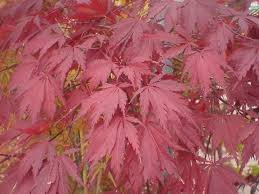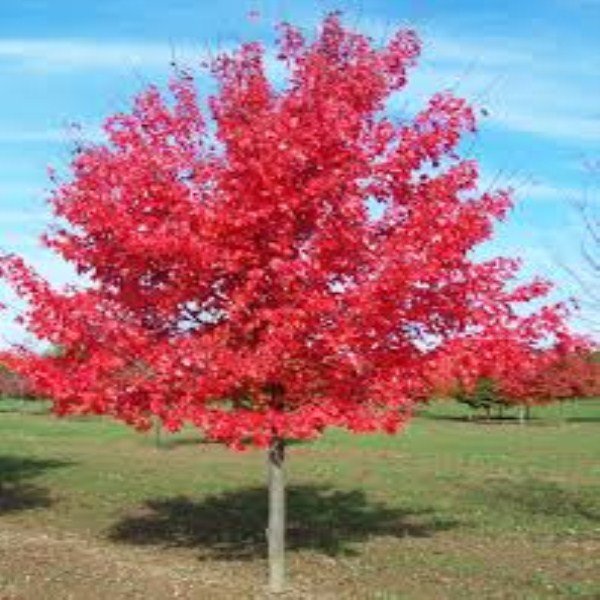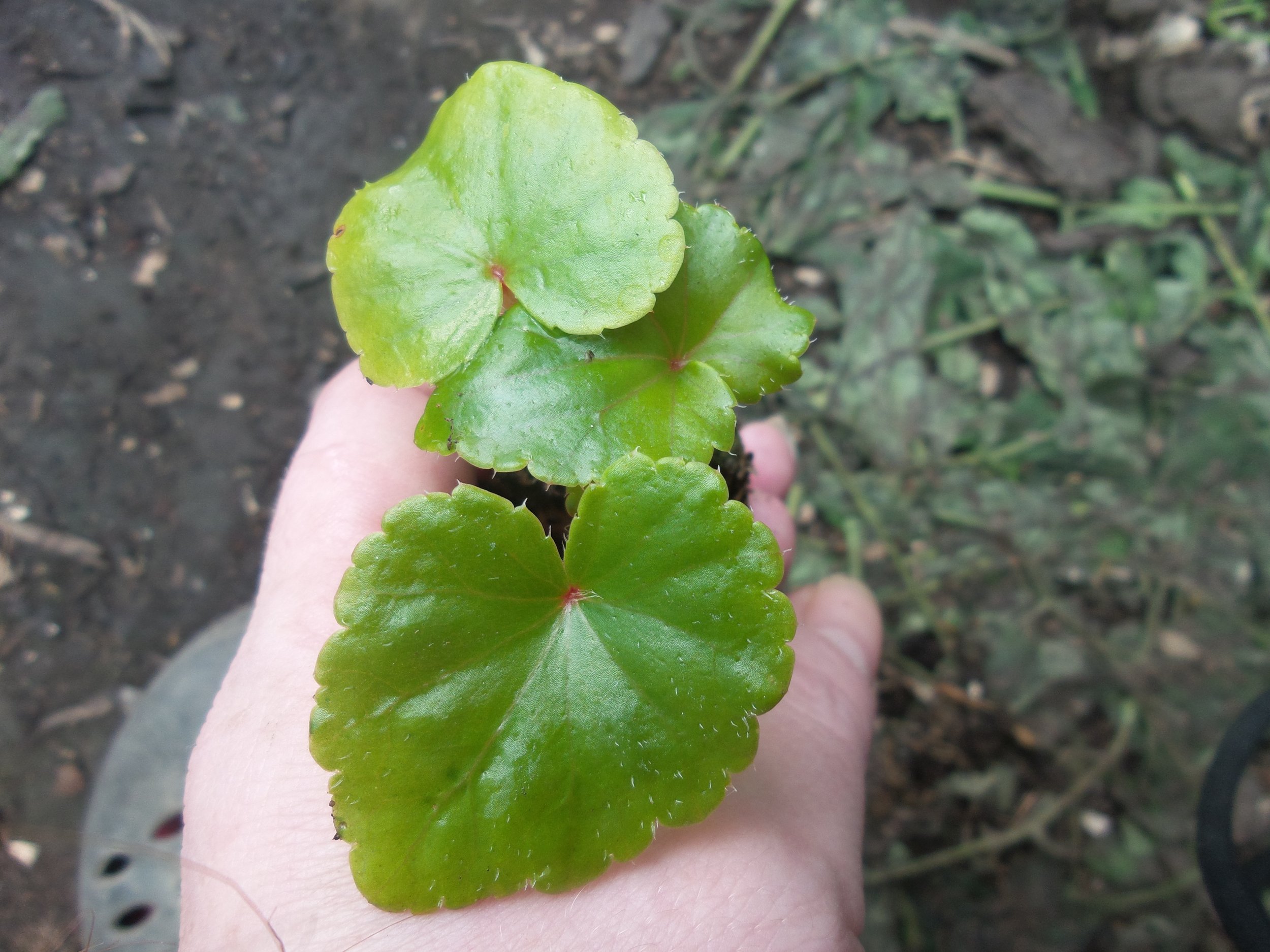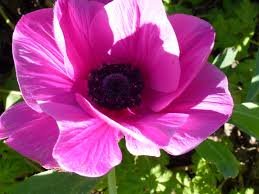Flowers in Bloom
Photographs of our Flowers
Winter Bedding Plants
Fruit ,Trees and Vegetables in Full Bloom
#flowers #Gardening
All Photographs By Retrosheep.com @Retrosheeps
Japanese Maple / Acer Tree's
Common name Japanese maple
Botanical name Acer
Group Trees
Flowering time Early to mid-spring
Planting time Autumn
Height and spread 1.2m-8m (4ft-25ft) wide and high, depending on cultivar
Aspect Sheltered/sun/partial shade
Hardiness Hardy with shelter from late frosts and cold winds
Difficulty Easy
Antirrhinums are a genus of plants commonly known as dragon flowers or snapdragons because
of the flowers' fancied resemblance to the face of a dragon that opens and closes its mouth when laterally squeezed.
They are native to rocky areas of Europe, the United States, and North Africa
Aloe Vera
Alyssum
Apple Tree
Allium
Common name Ornamental onion
Latin name Allium
Group Bulb
Flowering time Spring to mid-summer
Planting time Autumn
Height and spread Up to 1.8m (6ft) and 30cm (1ft)
Aspect Sun
Hardiness Hardy to borderline hardy
Difficulty Easy to Moderate
Aloe Vera - Aloe barbadensis
There are 250 species of Aloes in the world, mostly native to Africa. They range in size from little one inch miniatures to massive plant colonies consisting of hundreds of 2 foot diameter plants.
Although most Aloes have some medicinal or commercial value, the most commonly known is the Aloe barbadensis...
better known as the Aloe Vera.
Alyssum Other common names sweet alyssum 'Snowdrift'
Family Brassicaceae
Genus Lobularia can be annuals or perennials, of low spreading habit, with simple leaves and short terminal racemes of 4-petalled, fragrant flowers in summer
Details'Snowdrift' is a spreading annual to 15cm in height, with pure white, very fragrant flowers in rounded heads, in summer
Anemone
Anemone Other common names Apennine anemone
blue anemone
Family Ranunculaceae
Genus Anemone are herbaceous perennials with fibrous, rhizomatous or tuberous rootstocks, palmately lobed leaves and saucer-shaped, usually 5-petalled flowers
Details A. apennina is a rhizomatous perennial to 20cm tall; leaves divided into three toothed and lobed segments. Flowers solitary in early spring, to 3.5cm wide, with 10-15 narrowly oblong blue petals, above a whorl of three small stem leaves
Plant range S Europe
Antrithium
Common name Apple
Latin name Malus domestica
Group Top fruit, tree
Fruiting time Late summer to early autumn
Planting time Late autumn to early spring
Height and spread Variable, depends on training system used
Aspect Sun or shade depending on the variety
Hardiness Fully hardy
Aster Asteroid
Aster is a genus of flowering plants in the family Asteraceae. Its circumscription has been narrowed, and it now encompasses around 180 species, all but one of which are restricted to Eurasia; many species formerly in Aster are now in other genera of the tribe Astereae
Bacopa Snowtopia
The trailing, evergreen stems of this half-hardy basket filler bear a smothering of snow white flowers throughout summer. Let bacopa plants tumble from mixed patio containers and baskets for a brilliant display throughout summer. Height: 15cm (6"). Spread: 45cm (18")
Ideal For: patio
Flowering Period:
June, July, August, September, October
Sowing Months:
February, March
Position:
sun or semi shade
Begonia
Common name Begonia
Botanical name Begonia
Group Tender perennial
Flowering time Summer
Planting time Start into growth in early spring, plant outside after frosts
Height and spread Both 15-50cm (6-20in)
Aspect Sun or partial shade
Hardiness Tender
Difficulty Easy, moderate or difficult
Bellis Belle Livingstone Daisy
Box Buxus Hedging
Large double flowers that will complement Pansies perfectly
This Bellis (Daisy) has large double rosette flowers in red and pink shades and will flower in the Autumn and again in the Spring.
They complement pansies perfectly.
ColourRed, Rose Shades and WhiteHeight10 - 15cmSpreadApproximately 15cmFloweringAutumn and again in the SpringPlanting PositionFull Sun to Partial Shade
Asteraceae or Compositae, known as the aster or sunflower family, including:
Bellis, especially Bellis perennis (common daisy)
Brachyscome, including Brachyscome iberidifolia (Swan River daisy)
Leucanthemum vulgare (ox-eye daisy)
Leucanthemum × superbum (Shasta daisy)
Argyranthemum (marguerite daisy)
Osteospermum (African or Cape daisy)
Rhodanthemum (Moroccan daisy)
Glebionis coronaria (crown daisy)
Glebionis carinatum (tricolor daisy)
Erigeron glaucus (seaside daisy)
Tetraneuris acaulis (Angelita daisy)
Melampodium leucanthum (Blackfoot daisy)
Coreopsis bigelovii (desert daisy)
Wedelia texana (Devil's River daisy)
Family Aizoaceae: Dorotheanthus bellidiformis (Livingstone daisy)
Family Dipsacaceae: Scabiosa prolifera (Carmel daisy)
Family Plantaginaceae: Globularia (globe daisy)Daisy bush, various species in the family Asteraceae
Common name Box
Botanical name Buxus sempervirens, B. microphylla, B. harlandii
Group Shrub, Hedge
Planting time Autumn or spring
Height and spread Up to 5m by 5m (16ft by 16ft), but can be kept smaller
Aspect Sun or shade
Hardiness Fully hardy
Difficulty Easy
Busy Lizzie
Impatiens walleriana (syn. Impatiens sultanii), also known as busy Lizzie (United Kingdom), balsam, sultana, or simply impatiens, is a species of the genus Impatiens
Native to eastern Africa from Kenya to Mozambique. It is a flowering herbaceous perennial plant growing to 15–60 cm (6–24 in) tall, with broad lanceolate leaves 3–12 cm long and 2–5 cm broad.
Leaves are mostly alternate, although they may be opposite near the top of the plant. The flowers are profusely borne, 2–5 cm diameter, with five petals and a 1 cm spur.
The seedpod explodes when ripe in the same manner as other Impatiens species, an evolutionary adaptation for seed dispersal. The stems are semi-succulent, and all parts of the plant (leaves, stems, flowers, roots) are soft and easily damaged.
Cacti Cactus
A cactus (plural: cacti, cactuses, or cactus) is a member of the plant family Cactaceae within the order Caryophyllales.
The word "cactus" derives, through Latin, from the Ancient Greek κάκτος, kaktos, a name originally used by Theophrastus for a spiny plant whose identity is not certain. Cacti occur in a wide range of shapes and sizes. Most cacti live in habitats subject to at least some drought. Many live in extremely dry environments, even being found in the Atacama Desert, one of the driest places on earth. Cacti show many adaptations to conserve water. Almost all cacti are succulents, meaning they have thickened, fleshy parts adapted to store water. Unlike many other succulents, the stem is the only part of most cacti where this vital process takes place. Most species of cacti have lost true leaves, retaining only spines, which are highly modified leaves.
As well as defending against herbivores, spines help prevent water loss by reducing air flow close to the cactus and providing some shade. In the absence of leaves, enlarged stems carry out photosynthesis. Cacti are native to the Americas, ranging from Patagonia in the south to parts of western Canada in the north—except for Rhipsalis baccifera, which also grows in Africa and Sri Lanka.
Candy Tuft
Other common names
perennial candytuft
edging candytuft
see more
Synonyms
Iberis commutata
Family
Brassicaceae
Genus
Iberis can be annuals, evergreen perennials or sub-shrubs, with narrow leaves and racemes of white, pink or purple flowers
Details
I. sempervirens is a spreading evergreen sub-shrub to 30cm in height, with narrow, dark green leaves. Flowers pure white, in dense heads to 4cm in width, at first flattish, later becoming rounded, from late spring
Plant range
S Europe, SW Asia
Catnip -NEPETA CATARIA
nfd
nfd
NOT JUST FOR CATS
CATNIP FOR HERBAL MEDICINAL PURPOSES
Catnip is useful for settling an upset stomach. It has been used to treat headaches, scarlet fever, coughing, insomnia, and smallpox. It can also be used for cuts, studies show it has a natural healing quality. Crush fresh catnip leaves, damp them, and apply to your cut.
Some other medicinal uses for catnip include anaesthetic, antibiotic, anti-rheumatic, antispasmodic, astringent, calmative, diuretic, muscular aches and pains, rheumatism, chills, cold in the joints, hemorrhoids, toothache
Shop now
Chive
dav
Common Name: Chives
Genus: Allium
Species: schoenoprasum
Skill Level: Beginner
Exposure: Full sun
Hardiness: Hardy
Soil type: Well-drained/light,Chalky/alkaline, Dry, Moist, Sandy
Height: 45cm
Spread: 15cm
Time to plant seeds: April to May
Flowering period: July to August
Comfrey Dispatching Now ! CLICK HERE
Comfrey 'Bocking 14' Symphytum x uplandicum 'Bocking 14', Russian Comfrey Hardy Perennial Grow your own soil conditioner! Comfrey 'Bocking 14' contains high levels of basic NPK nutrients and because it is a sterile hybrid,
it won't self seed all over your garden.
The nutrient rich foliage of comfrey can be used as a compost activator, mulch, or soaked in barrels of water for 3 to 5 weeks to make a useful liquid feed for tomatoes and beans. this quick growing plant can be cut 3 or 4 times throughout the growing season, for a constant supply of nutrient rich, organic, comfrey fertiliser. Height: 100cm (40"). Spread: 75cm (30")
kitchen garden, low maintenance garden, woodland garden
Flowering Period:
May, June, July, August
Position:
sun or semi shade
Shop now
CROCOSMIA HARLEQUIN MONTBRETIA Dispatching Now ! CLICK HERE
Crocosmia Harlequin Montbretia Bulb Beautiful Spring Summer Flower Perennial
Crocosmia Harlequin Montbretia Bulb Beautiful Spring Summer Flower Perennial
Crocosmia Harlequin Montbretia Bulb Beautiful Spring Summer Flower Perennial
Botanical name: Crocosmia 'Harlequin'
Other names: Montbretia 'Harlequin'
Genus: Crocosmia
Variety or Cultivar: 'Harlequin' _ 'Harlequin' is a clump-forming, cormous perennial with upright, lance-shaped, dark green leaves and, from midsummer into autumn, arching, branched dark purple stems bearing racemes of funnel-shaped flowers with yellow inner faces and alternating orange and red on the reverse side of the petals.
Crocosmia 'Harlequin' is: Deciduous
Flower: Orange, Red, Yellow in Summer; Red, Yellow, Orange in Autumn
Foliage: Dark-green in Spring; Dark-green in Summer; Dark-green in Autumn
Habit: Clump-forming, Erect
Curry Plant
Helichrysum italicum
Plant
Helichrysum italicum is a flowering plant of the daisy family Asteraceae. It is sometimes called the curry plant because of the strong smell of its leaves. It grows on dry, rocky or sandy ground around the Mediterranean.Wikipedia
Scientific name: Helichrysum italicum
Higher classification: Helichrysum
Rank: Species
Daffodil
Common name Daffodil
Latin name Narcissus
Group Bulb
Flowering time Typically February to early May
Planting time September and October
Height and spread 5cm (2in) to 50cm (20in)
Aspect Sun or light shade
Hardiness Mostly fully hardy
Difficulty Easy
Dahlia
Botanical name Dahlia
Group Tuberous-rooted perennials
Flowering time Mid-summer to autumn
Planting time Usually May to early June
Height and spread 40cm-1.5m (16in-5ft) and 40-90cm (16in-3ft)
Aspect Full sun
Hardiness Frost hardy to frost tender
Difficulty Easy
Dahlia is a genus of bushy, tuberous, herbaceous perennial plants native to Mexico. A member of the Asteraceae, dicotyledonous plants, related species include the sunflower, daisy, chrysanthemum, and zinnia.Wikipedia
Scientific name: Dahlia
Higher classification: Coreopsideae
Rank: Genus
Lower classifications: Dahlia 'Bishop of Llandaff', Dahlia imperialis
Fig Tree
Fuschia
Common name Fuchsia
Botanical name Fuchsia
Group Half-hardy perennial/shrub
Flowering time Summer to autumn
Planting time Hardy types: plant in spring or autumn. Half-hardy: plant out after danger of frost has passed
Height and spread Various
Aspect Full sun or partial shade
Hardiness Fully hardy to frost tender
Difficulty Easy to moderate
Geranium
Common name Pelargonium, geranium
Botanical name Pelargonium
Group Houseplants, bedding or greenhouse plants
Flowering time Mainly spring-summer
Height and spread 10-90cm (4in-3ft) by 7-50cm (3-20in)
Aspect Most need full sun, some tolerate partial shade
Hardiness Tender
Ribbon Grass
gardener's garters
bride's laces
see more
Family
Poaceae
Genus
Phalaris can be annual or rhizomatous perennials grasses with relatively broadly linear leaves and small green flower spikelets in open panicles
Details
P. arundinacea var. picta is a vigorous perennial grass forming an extensive colony of erect stems to 60cm tall, bearing narrow leaves boldly striped with white, pale and dark green, and narrow pale green flowering panicles in summer
Heather Calluna vulgaris
Other common names
heather 'R.B. Cooke'
FamilyEricaceae
GenusErica can be prostrate or erect, evergreen shrubs with fine, needle-like leaves in whorls, and racemes or panicles of small, bell-shaped or tubular flowers
Details'R.B. Cooke' is a prostrate evergreen shrub to 20cm, forming wide mats of mid-green foliage, with racemes of clear pink flowers which age to mauve, in late winter and spring
Iris
Position: full sun
Soil: well-drained, moderately fertile, neutral or alkaline soil
Rate of growth: average
Flowering period: May to June
Other features: all parts of the plant may cause severe discomfort if ingested; contact with the sap may irritate the skin
Hardiness: fully hardy
Bulb Size: 6/7
Florists love Dutch iris as they have strong, straight stems and exquisite flowers that look great in spring bouquets. 'Gypsy Beauty' is a particluarly pretty one. It has slightly ruffled lavender standards and heavily veined, bicoloured falls, which are a lush mix of gold and purple. Plant more than you think you will need for the border, so you have plenty left over for cutting.
Garden care: Plant 10cm deep and 10cm apart in naturalistic drifts in September or October in a well-drained, sunny site.
Harmful if eaten
LADY'S MANTLE -Alchemilla mollis
Synonyms Alchemilla grandiflora hort.
FamilyRosaceae
GenusAlchemilla are perennials with palmately lobed basal leaves and sprays of tiny, yellow or greenish flowers
DetailsA. mollis is an herbaceous perennial forming a clump of softly hairy, light green leaves with scalloped and toothed edges. Small, bright yellow flowers are borne in large sprays just above the foliage. Often seeds freely
Plant rangeCarpathians Caucas.
Lavender
Common name Lavender
Botanical name Lavandula
Group Shrub, herb
Flowering time Summer
Planting time Spring
Height & spread 30cm-1m (1-3ft) height, 30cm-1.5m (1-5ft) spread
Aspect South or west facing
Hardiness H5 (hardy - cold winter) to H2 (tender - cool or frost-free greenhouse)
Difficulty Easy
Trailing Lobelia
Other common names trailing lobelia Cascade Series
FamilyCampanulaceae
GenusLobelia can be annuals, perennials or shrubs, with simple leaves and showy 2-lipped flowers that may be solitary or in racemes or panicles
Details Cascade Series are trailing annuals to 15cm, with neat foliage and usually white-eyed flowers 2cm across, in shades of blue, violet, mauve, pink and crimson as well as white
Marigold
African marigold 'Inca Orange'
Family Asteraceae
GenusTagetes can be annuals or perennials of upright growth, with strongly aromatic pinnately divided leaves and showy daisy-like, single or double flower-heads in summer and autumn
Details'Inca Orange' is an African marigold to 30cm, with large, fully double, bright orange flowers from early summer to early autumn
Other common names French marigold 'Honeycomb'
Family Asteraceae
GenusTagetes can be annuals or perennials of upright growth, with strongly aromatic pinnately divided leaves and showy daisy-like, single or double flower-heads in summer and autumn
Details'Honeycomb' is a dwarf French marigold to 25cm, with fully double, crested flowers to 5cm across, the light mahogany-red petals edged with deep yellow
Mint
apple mint
round-leaved mint
see more
FamilyLamiaceae
GenusMentha are aromatic, rhizomatous perennials with opposite, toothed leaves and small tubular flowers in spikes of whorls in summer
Details
M. suaveolens is a vigorous rhizomatous herbaceous perennial to 90cm tall, with rounded, softly hairy, apple-scented leaves to 4cm long, and dense spikes of tiny pale purple flowers in late summer and early autumn
Nasturtium
Other common names
garden nasturtium
greater Indian-cress
Family
Tropaeolaceae
Nettle
Urtica dioica, often called common nettle or stinging nettle(although not all plants of this species sting), is a herbaceous perennial flowering plant
Nettle (also known as Stinging Nettles) has been used for centuries to treat allergy symptoms, particularly hay fever, as it contains biologically active compounds The nettle is one of the most useful plants in Britain and even its sting can be beneficial. Nettle is a highly successful plant found all over the temperate areas of the world. It spreads by means of seeds and underground rhizomes that creep
OX-EYE DAISY PLANTS LEUCANTHEMUM VULGARE
ox-eye daisy
marguerite
Synonyms
Chrysanthemum leucanthemum
Family
Asteraceae
Genus
Leucanthemum are robust herbaceous perennials with narrowly oblong leaves and daisy-like flower-heads with white rays
Details
L. vulgare is a rhizomatous perennial with dark green spoon-shaped leaves and solitary white, daisy-like flowerheads with yellow disk florets, in late spring and early summer
Pansy Viola
Beautifully scented Pansy with large flowers Pansies are part of the Viola family. Pansy Grande Fragrance is one of our favourite Pansies, available for sale in the Autumn and the Spring. The brightly coloured faces of these large flowers are also scented. Perfect for the front of your borders or in patio pots and containers. Pansies aren't just for winter!
ColourPrimrose, Yellow Blotch, White Blotch, Porcelain Blue, Orange and Red Blotch
Height20 - 25cm
SpreadApproximately 15cm
FloweringAutumn and Spring
Planting PositionFull Sun to Partial Shade
Petunia
Petunia Surfinia Bolero mixed
Petunia is genus of 35 species of flowering plants of South American origin, closely related to tobacco, cape gooseberries, tomatoes, deadly nightshades
petunia 'Suntosol'. Surfinia Pink Vein is a vigorous trailing plant with 25cm tall, with light rosy-purple flowers 6cm across, veined with deep reddish-purple
Primrose and Polyanthus Dispatching Now CLICK HERE
Primula vulgaris
the RHS today and get 12 months for the price of 9
Join now
Other common names
primrose
blue primrose
see more
Synonyms
Primula acaulis
Primula grandiflora
see more
Family
Primulaceae
Genus
Primula are herbaceous or semi-evergreen perennials, forming a basal rosette of simple leaves, with salver-shaped or bell-shaped flowers which may be solitary or carried in an umbel or in whorls on an erect stem
Horticultural Group
Primroses are rosette-forming herbaceous perennials, sometimes grown as annuals, with clusters of solitary flowers arising from the rosette in late winter or early spring
Details
P. vulgaris is a perennial forming a rosette of tongue-shaped leaves, with many scented, usually primrose-yellow flowers 2.5-3.5cm across, in early spring
This variety of Primrose is fully frost hardy and specifically bred for winter performance.
RAINBOW PRIMROSE
COLOURS Blue, Primrose, White, Red, Rose, Yellow, Pink and Orange
Height 10 - 15cm Spread Approximately 10cm
Flowering Late Winter to late Spring
Planting Position Full Sun to Partial Shade
TOBACCO
HOW TO GROW TOBACCO FROM SEED IN THE UK
TOBACCO GROWING GUIDE
Sow seeds indoors in flats, trays or small pots 6‐8 weeks
before transplanting. A plastic tray with 4 or 6 packs inserts
works very well. Fill trays approximately 3 inches deep with a
fine starting mix soil or potting soil. Pack soil very lightly.
Potting soil should be screened to remove any large chunks.
Thoroughly soak soil and let drain before seeding. Do not use
garden soil.
Sprinkle 2‐3 seeds in each pot on top of the moistened soil.
Do NOT cover seed. Mist the seeds lightly with a spray bottle
and cover the tray loosely with a plastic dome or sheet of
clear light plastic film. Do not seal tightly. Leave a corner
propped up to allow some air exchange. Place in a well lit
area near a window or under grow lights where the
temperature is a constant 70‐80 degrees. Do not exceed 85
degrees. Mist the trays daily and keep the soils surface moist
at all times. Seeds will germinate in 7‐14 days. Tobacco seed
germination is very temperature dependent. Lower
Temperatures will greatly delay germination.
When the seeds start sprouting, remove the plastic cover and
move to a fully light area such as a greenhouse, cold frame or
under grow lights. Keep soil moist at all times, but do not over
water. Water when the surface of the soil first begins to
appear dry. Over watering may cause seedlings to dampen
off, and impedes root development. Thin or divide seedlings
to 1 per pot.
TOBACCO Planting instructions:
Set seedlings outside in filtered sunlight for 2‐4 hours per day
for a week before planting to acclimate and harden off the
seedlings. Plant seedlings in rows spaced 2 feet in all directions
after all danger of frost has passed. Keep soil moist until plants
are established. It is normal for plants to wilt after
transplanting and appear not to grow at all during the first 2
weeks. All the growth is taking place under ground at this
stage. Once established, tobacco requires little water. Fertilize
lightly at planting and again in 4‐6 weeks only if needed.
Cut off the flower heads when they appear. Topping forces
the energy into the leaves making them larger and thicker.
Cut off suckers (side branches) when topping. Leaves ripen 2‐
3 weeks after topping and are ready to harvest when they
turn yellow, or become a mottled green and yellow with
curled edges.
Harvesting and curing TOBACCO:
Leaves may be picked as they ripen (primed) and strung on
wire or string with ½ inch of space between them for curing.
Whole plants can be cut and hung when 50% of the leaves
show signs of ripening. Curing (aka color curing) happens
when chlorophyll in the leaf breaks down and the leaf
changes from green or yellow to brown. Hang leaves or plants
in an area where you can maintain a daily average of 70‐80%
humidity to cure and dry. Basements or outdoor sheds often
make great curing locations. If dried to quickly, the leaf will
not cure and will dry green. Tobacco that fails to cure and
dries green is unsmokable.
After curing, continue to dry the leaf until it is completely dry
and the main stem snaps like a twig. Once cured and dried,
the leaf can be left to hang and age where it is, or brought
back into case (re‐humidified until the leaf is pliable) then
packed into cardboard boxes for storage and to age. Aging
allows time for nitrogen compounds in the leaf to break
down, which removes the harshness of freshly cured tobacco
and lets the true flavors come through.













































